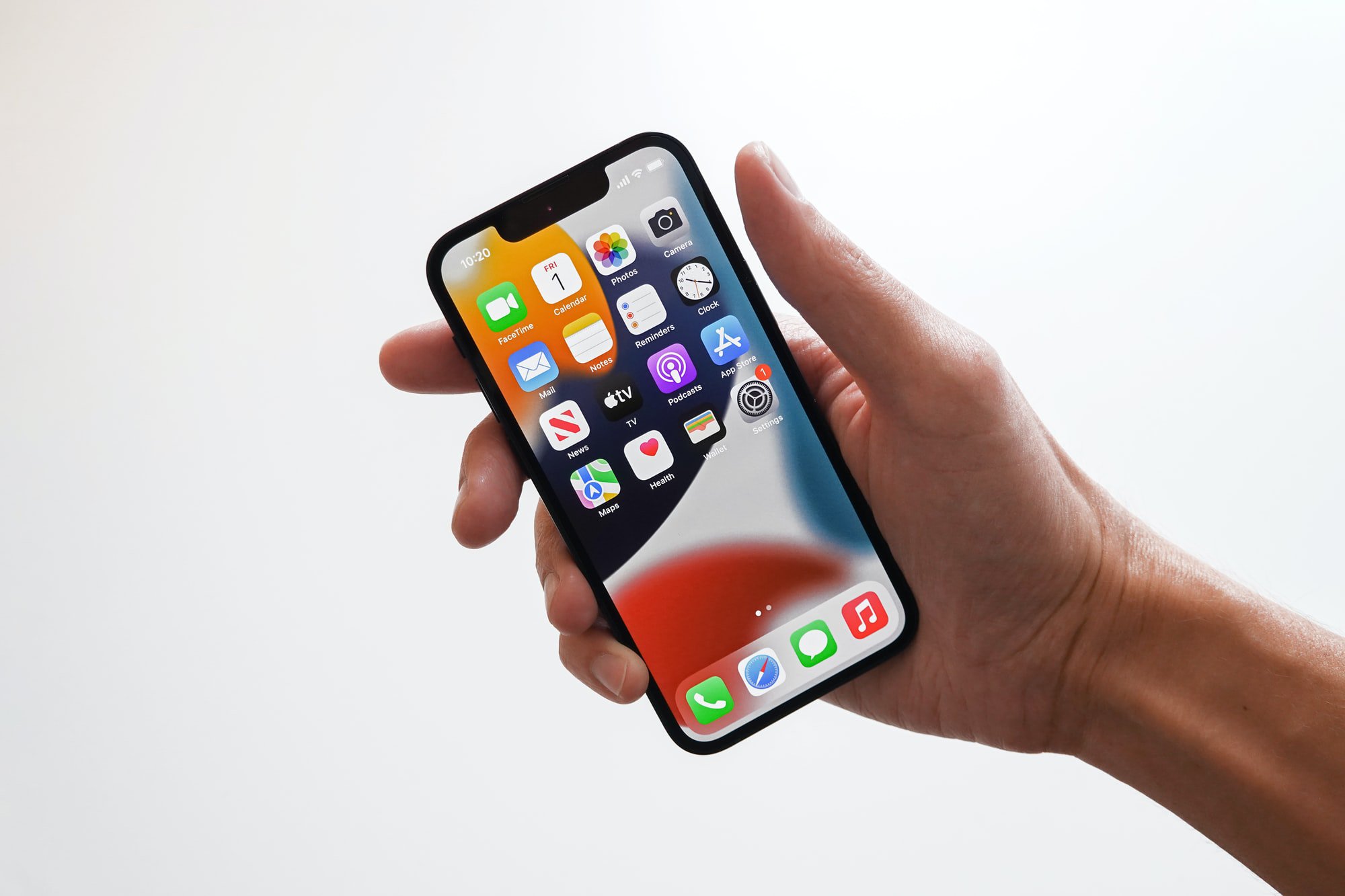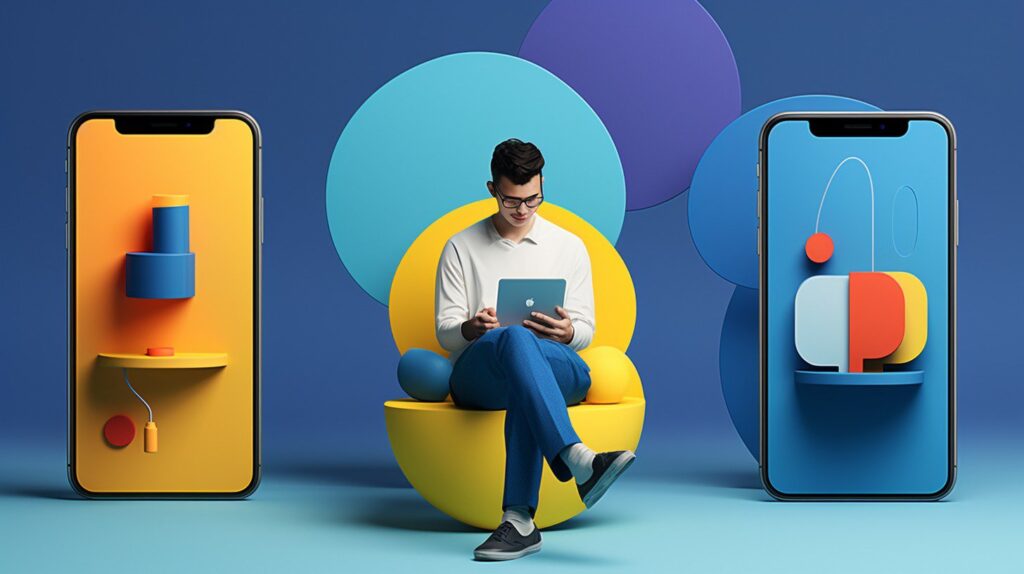What is a Minimum Viable Product?
A minimum viable product (MVP) is a concept popularized by Eric Ries in The Lean Startup, a book we feel is a bit outdated but has some gems. The idea is that you get early adopters to validate your business model. This validated learning about customers via a minimal viable product allows founders to see if their business model is possible and should go into further product development. The idea of the MVP way is your amount of effort to collect the maximum amount of validated learning.
The Lean Startup by Eric Ries provides a scientific approach to creating and managing successful startups in an age where companies are expected to change and grow at a rapid pace. The central idea of The Lean Startup is to use customer feedback and data-driven decision-making to validate whether a business idea is worth pursuing. The book has influenced the startup world and helped popularize the MVP concept.
The MVP is the minimum product you can put in front of customers to get feedback about your business model and whether it is worth pursuing.

Purpose of a Minimum Viable Product
An MVP or a minimum viable product aims to facilitate rapid and easy development of products on established concepts with minimal budgets. The method allows the business to gather users’ feedback and include it in future product iterations. With an MVP, a person can find the right audience and pull the idea from experience, saving time.
Building an MVP requires achieving a balance between what the company offers to users and what users want. MVPs test assumptions about the solution and its effectiveness for customers. For example, MVPs help organizations eliminate errors while delivering products and services.
Why is a minimum viable product necessary?
The key to a successful business lies in understanding customers’ needs and delivering a product that perfectly meets these needs. However, it is not always easy to understand what customers want. The MVP comes in handy because it allows you to test your assumptions about the products and services you want to offer to the market.
A minimum viable product or MVP is a product with the minimum set of features that allows you to test your assumptions about the product. MVPs are usually released early to a select group of users, typically known as early adopters. These users provide feedback about the product, which helps in further development.
Building an MVP requires a trade-off between what the company wants to offer and what users want. Hence, the MVP should offer enough value to users so that they are willing to provide feedback, but it should not be overloaded with features that are not essential.
The minimum viable product approach has several advantages over traditional product development.

Some of the advantages of Minimum Viable Products are:
1) Reduced risk: By releasing a minimum viable product, you can reduce the risk of failure by gathering feedback from users early on.
2) Quick development: A minimum viable product can be developed quickly, helping maintain a budget
3) Improved UX: Minimum viable products help improve the UX because they are designed with users’ feedback.
4) Validated learning: Minimum viable products help validate learning, which means you can test your assumptions about the product before investing in further development.
5) Early feedback: Minimum viable products help get customer feedback, which can be used for further development.

Business Benefits of MVP Product Development
The main benefit of MVP product development is that it allows startups and businesses to reduce the risk of failure by gathering feedback from customers early on. Additionally, MVPs can be developed quickly, which helps save the budget.
Furthermore, MVPs help improve the UX because they are designed with customer feedback. Lastly, MVPs help validate learning, which means you can test your assumptions about the product before investing time and money in further development.
Creating a minimum viable product helps reduce the risk of failure, saves money, improves the experience, and validates learning. Even though these are all significant benefits for any business, they are essential for startups. Startups have limited resources and need to be efficient to succeed. Therefore, the MVP approach is perfect for them.
Consider using the MVP approach if you’re starting a business or working on a new product. It could help you save your resources while reducing the risk of failure.

What are the characteristics of a good MVP?
There are several characteristics of a good MVP, but some of the most important ones are listed below.
1) The MVP should offer the market enough value, so they are willing to provide feedback.
2) The MVP should not be overloaded with features that are not essential.
3) The MVP should be able to be developed quickly.
4) The MVP should be designed with customer feedback.
5) The MVP should help in validated learning.

What else can you use your Minimum Viable Product MVP for?
Fundraising before going to market
You can use your MVP to raise funds if you have a great product idea or a business model but have no money to develop it. You can create a pitch deck and present it to potential investors. If they like your idea, they will invest in your company and help you develop your product further.
Customer Development
Customer development is the process of understanding customers’ needs and developing a product that meets these needs. MVPs can be used for customer development because they help get customer feedback early on. This feedback can be used to develop the product further or create a marketable product.
Sales and Marketing
MVPs can also be used for sales and marketing purposes. You can use your MVP to generate interest in your product and get people to sign up for your beta launch. Additionally, you can use your MVP to track customer behavior and understand what properties they are looking for.
Many startups on Design Match use minimum viable product (MVP) development as their go-to-market strategy. MVPs help startups validate their product ideas and gather feedback from customers quickly and efficiently.
Early Revenue from real customers
If you have a great product idea but are bootstrapped, one way to generate early revenue is to release an MVP and charge customers for using your product. This will help you in generating funds to develop your product further.
Create a prioritized product development roadmap
Once you have released your MVP, you can use the feedback from the market to create a prioritized product development roadmap. This roadmap will help you decide which features to develop next and in what order.
To get feedback and improve the experience for users.
You can use your MVP as a beta release to get user feedback and improve the customer experience. This will help you get feedback from the market early on and use it to improve the product and develop a marketable product.
Releasing your MVP as a beta will also help generate interest in your product. User feedback is one of the most critical aspects of MVP development because it allows startups to improve their product and make them more user-friendly. You can release your MVP as a beta if you want to get user feedback. This will help you get feedback from users early on and use it to improve the product.
To validate your product idea.
If you want to validate your product idea, you can use your MVP as a proof of concept. This will help you test your assumptions about the product and gather customer feedback. If the input is positive, it will help you validate your business model.
Releasing your MVP as a proof of concept will also help in generating interest in your product. If the market likes your product, they will be more likely to use it and recommend it to others. Releasing your MVP as a proof of concept will also help get users’ feedback early on.
To track customer behavior.
You can use your MVP to track engagement if you want to track customer behavior. A systematic way to process the behavior of your market will ensure you always prioritize real customers’ needs. This will help you understand how the market interacts with your product and what features they are looking for. Additionally, monitoring customer behavior will help you know which features are most popular and which need improvement.

5 Design Mistakes to Avoid While Building a Minimum Viable Product MVP
Founders have big ideas, and the idea is that an MVP tests what’s most important. It can be hard to determine what is essential when building your minimal viable product, but if you avoid these mistakes, you’ll be on track to assess your viable product.
Develop when you can prototype
You don’t need to wait until your product is perfect to start testing it on the market. It’s often better to get something out as soon as possible so that you can get feedback and iterate on it. You can use a prototype even to raise funds. Check out this article on how to create a half-a-million dollar prototype.
Coding when no code or templates are available
Many great resources are available online to help you prototype your product without coding everything from scratch. Many great templates help you get started if you’re not a coder. It’s important to remember to take the shortest route to get your customer’s value and get your product on the market.
Or, if you are too busy developing your products, hiring a designer on Design Match can help you have a great experience without having to do everything yourself. You can lighten your workload and concentrate on what you do best –running your business.
Adding too many features
When you’re starting, it’s essential to focus on the core benefits of your product. You can always add more features later on, but it’s necessary to ensure that the core benefits work well before adding anything else.
It’s also essential to keep in mind that each property you add will add complexity to your product. Focusing on the property that will provide the most value to your customers is critical.
Hiring an in-house team to build your minimum viable product
Working with companies like Design Match gives you more flexibility and access to a diverse pool of skilled freelancers. With Design Match, you can also get started with your minimum viable product faster and at a lower cost for your business than hiring in-house.
By working with Design Match, you have ensured a designer with the necessary skills without worrying about training new staff on board. Design Match matches your startup with industry experience designers who understand your target market. However, hiring an in-house team is more expensive and time-consuming because you must go through the recruitment and training processes.
Not testing user experience.
It’s essential to test your product with users early on to ensure the experience is good. If you wait too long to try, you might end up with a product that is difficult to use or doesn’t meet user needs. Testing can be as simple as putting a quick landing page on social media to gather feedback.
A designer is a huge part of your MVP as they will help set the product’s tone and ensure the experience is up to par. Hiring a designer on Design Match is a great way to get started on your MVP, as you can be assured of having a good experience and product.

A step-by-step process for building a minimum viable product
Following a strategy when creating your minimum viable product will ensure you don’t run in circles.
Understand your stakeholders
Before you build your MVP, it’s essential to understand your stakeholders. Who are the customers that will be using your product? What are their needs? What are their pain points? Once you know your stakeholders well, you can start thinking about what features to include in your MVP.
Your MVP should focus on the core attributes that your stakeholders need. For example, if you’re building a social network for artists, the core features might be a way to upload artwork, a way to connect with other artists, and a way to find art events.
Map out what is essential
The next step is to map out what is essential for your MVP. What are the core benefits that you need to include? What can be left out? Once you understand what is necessary for your customers, you can start thinking about how to build it.
Hire a product designer
Once you understand what is essential for your MVP, it’s time to hire a product designer. A product designer will help you map out the user experience and ensure that your MVP is easy to use.
Design Match is a great place to start if you’re unsure where to find a product designer. We can help you find the perfect designer for your project. We help match you with a designer who has experience in your industry to make the design process even faster.
Develop your MVP
Now it’s time to start developing your minimum viable product. This is where things can get tricky if you’re not a coder.
If you’re not a coder, there are a few options:
1. You can use a platform like Bubble to build your minimum viable product or landing page without coding everything from scratch.
2. You can find templates online that you can use to build your minimum viable product.
3. You can hire a freelancer to help you build your MVP. Design Match is the best place to hire one. We have a wide variety of talented freelancers who can help you build your MVP quickly and affordably.
You can start coding your MVP from scratch if you are a coder because this will give you more control over the design and user experience but will take longer to build.
No matter which route you choose, focusing on the user experience is essential. Your MVP should be easy to use and meet your customers’ needs.

Create a prototype
Once you have a basic MVP, it’s time to create a prototype. A prototype is a clickable version of your app or website that you can use to test the user experience. Creating a prototype for your business will help ensure that your MVP is easy to use and that your startup is on track for success. A great example use case for prototype allows you to find usability issues and present them to investors to raise funds.
If you’re not sure how to create a prototype, Design Match can help. We have a team of experienced designers that can help you create a prototype that is easy to use and test.
Test your minimal viable product on the market
Once you have a prototype, testing your MVP with actual users is time. This is where you will find out if your MVP is accomplishing its goals. If you find users struggling with your MVP, it’s time to make changes and create a version of a new product. Be sure to test with customers with the least probably to give you good feedback, just because you’re asking. Don’t ask family for feedback. You want to ensure you get honest feedback from customers.
There are a few ways to test your minimum viable product MVP:
1. You can use a service like Maze to have users test your MVP and give you customer feedback.
2. You can go to a public place and ask people to test your MVP.
Make sure to take the feedback you receive from the market and use it to improve your MVP. Be sure also to define a goal for the input.
Develop or Fundraise
After you’ve tested your MVP and made the necessary changes, it’s time to start thinking about how you will fund your product. If you’re not sure how to support your development, there are a few options:
1. You can develop your MVP yourself if you have the resources.
2. You can raise money from investors.
3. You can use a service like Kickstarter.com to raise money from the public.
Once you’ve decided how to fund your product, it’s time to start developing it or raising money.
Launch your minimum variable product
After you’ve developed or raised money for your MVP, it’s time to launch it. This is where you will find out if your product is successful. Creating a landing page and posting on social media is a great way to let users know about your new business. The landing page can direct users to your startup and help build an initial user base.
If users like your MVP, you can start adding new features and scaling your product. If users don’t like your MVP, you can make changes and try again. Be sure to define a target for your app or website launch. A target lets you know if your business or startup is on the right track.
Examples of Minimum Viable Products from top tech companies
We’ll show you how MVP works in action by giving several examples from some of the best technology companies. Many software and products we use today started as an MVP, a concept trying to provide value to the market. Each example below had a clear product definition and understanding of the problem they were trying to solve.
Here are some examples of applications that started as minimum viable products:

Dropbox
The first version of Dropbox was a website that allowed the market to sync their files between two computers. Previously, customers had no platform or software similar to dropbox – that offered this service, and it was very tedious working between two computers. Dropbox understood its customers could create a simple solution.
Airbnb
The first version of Airbnb was a website that allowed the market to find rooms to rent from other people. The company struggled to get its platform off the ground. Yet, their effort paid off when they focused on service and providing a solution to customers.
Slack
The first version of Slack was an app that allowed customers to communicate with each other using simple commands. This software was the solution to fragmented communication. This is what led to their success.

Tinder
The first version of Tinder was a concept app that allowed people to make a profile and find matches based on their location. The platform was the solution for rejection in the data world. The AI model used for Tinder was really at the heart of this software. It can analyze a page in less than a second. This is what led to their success.
The first version of Facebook was a website that allowed people to create a profile and add friends. The first concept of Facebook was basic but set the stage for what we know today as one of the essential apps in our lives.
Twitter started as a website that allowed clients to post short updates and follow other posters. It is a fantastic example of an MVP with a clear concept and product definition. Twitter focuses on creating value for its customers. They had an incredible launch video, clearly showing how this new website could add value to the lives of its customers.
The first version of Instagram was an app that allowed IG clients to share photos and follow other IG people. Before moving to video, Instagram was a basic photo-sharing app. People had their page, but at this stage, they couldn’t do much with it. Now part of Facebook, the final versions of Facebook include video sharing, and it’s also a marketing platform.
Snapchat
The first version of Snapchat was an app that allowed people to share photo and video content with each other. Snapchat was another basic app whose marketing exploded its growth. Using video marketing, Snapchat could show how the public could get value from this app.

The first version of Pinterest was a website that allowed people to pin images and follow other users. The Pinterest search model became a new way to index pages online. Pinterest. Our process for searching for content today is much more visual than in the past.
YouTube
The first version of YouTube was a website that allowed users to upload and share videos. It was not a common medium for sharing when YouTube was created. At this stage of the internet, the process for uploading a video online was complicated, and video editing required intense software. The YouTube model completely change this, and now we process video in a completely different way.
In the beginning, LinkedIn didn’t have almost all the properties for which LinkedIn is well-known now. It was only the website with user profiles, and email invites to connect with people you know. But because of the use of minimum viable products to test their website, the company was able to develop it into the LinkedIn we know today.
Final Thoughts
Developing a minimum viable product is a great way to validate your business idea and ensure that your product is easy to use. If you’re not sure where to start, Design Match can help. We have a vetted network of experienced designers that can help you create a prototype and test your MVP with users.
What are your thoughts on minimum viable products? Let us know in the comments below! Have you developed one before? Share your experiences in the comments below.




